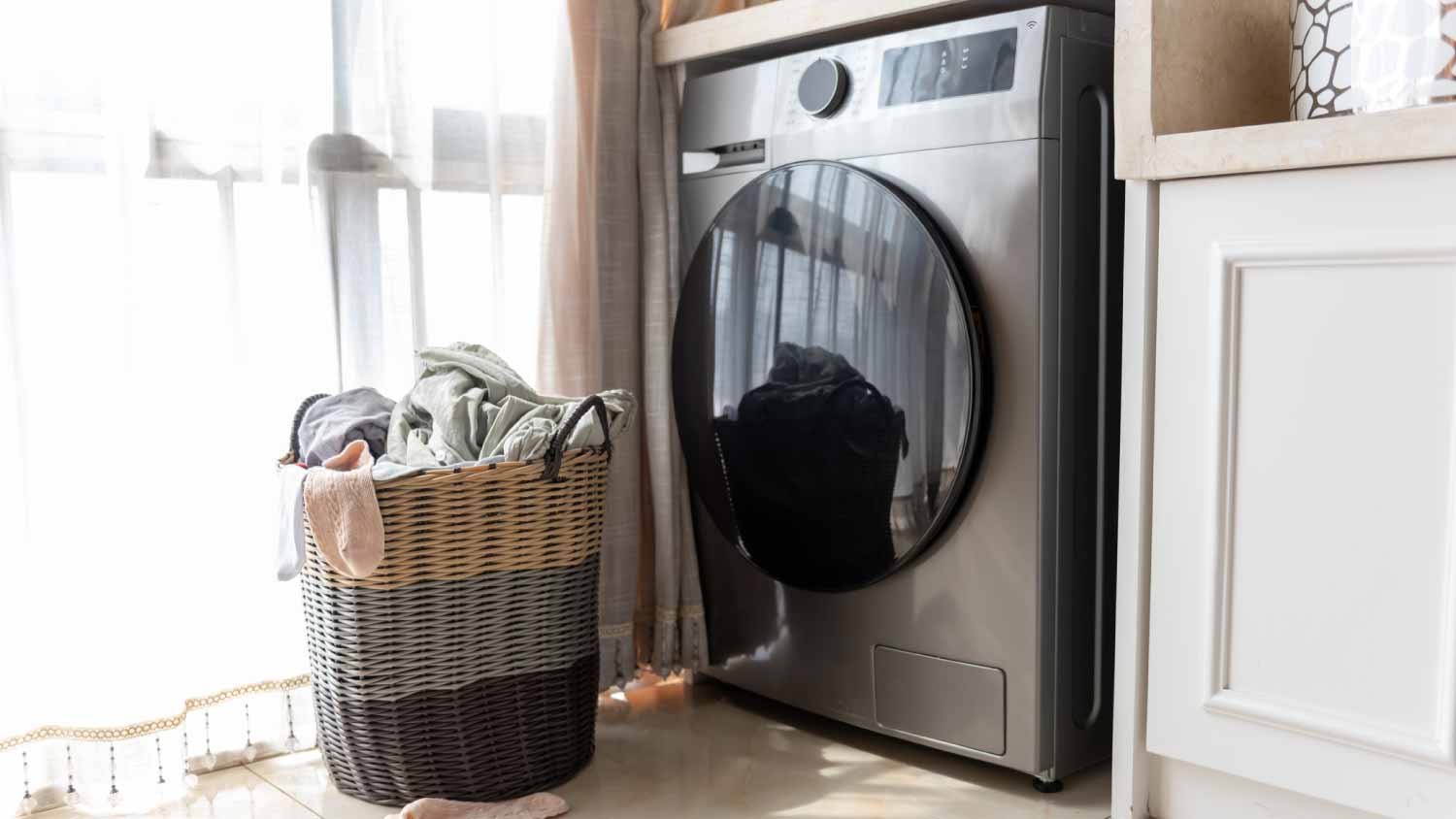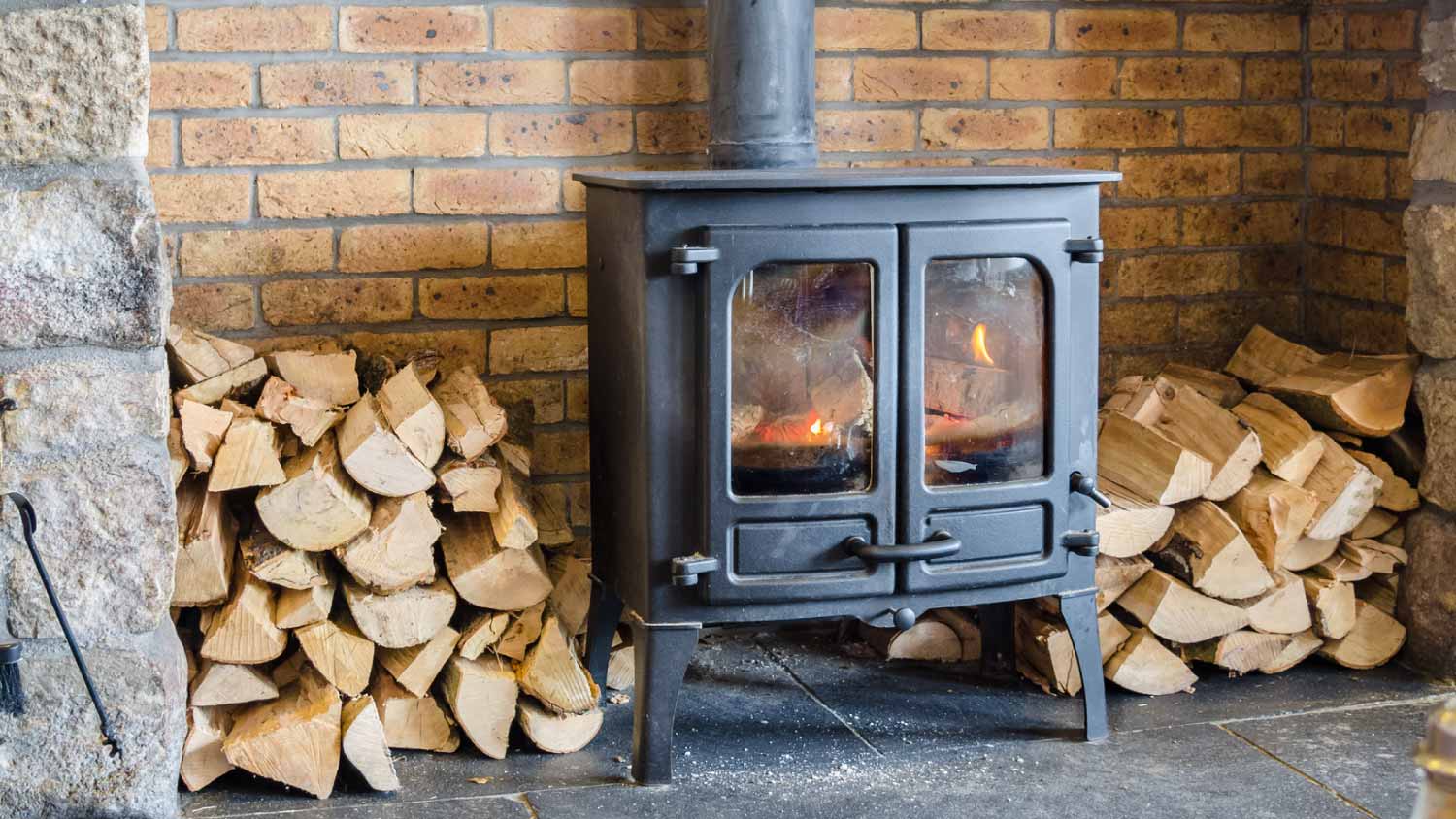What to Know About Washing Machine Drain Code Requirements
Stay ahead of leaks by making sure your washing machine drain is up to code


The standard washing machine drain size is 2 inches, and the minimum requirement is 1 1/2 inches.
Modern washers typically require a larger drain, and you may need a larger drain if it’s connected to your kitchen sink.
Standpipes should be between 18 and 30 inches from the floor.
Some standpipes require ventilation, while others don’t.
Ensure the drainage system is in working order to get the most out of your washer and avoid a troublesome leak. This guide will help you determine whether your washing machine drain is the correct size and up to code, check the height of your standpipes, and know when to call in a pro.
What Is the Standard Washing Machine Drain Size?
According to the Universal Plumbing Code, the standard drain size for a washing machine is 2 inches. The absolute minimum should be about 1 1/2 inches. However, keep in mind that wash load capacities can vary by up to 400% or more depending on the model. You may want a larger drain to ensure your machine can handle larger, multiple loads and avoid drainage problems.
Common Washing Machine Drain Code Errors
Washing machines pump water into the drum and constantly cycle water in and out to clean your clothes. The more powerful the machine, the more water it’s pumping. With most newer models, you need a drainpipe that’s wide enough to handle these loads.
If your washing machine connects to your kitchen sink, you’ll need a 3-inch hose drain. However, if your washer and kitchen sink are separate units, you’ll only need to use 1 1⁄2 inches of pipe and a 2-3⁄4-inch trap to dispose of used water.
“Most jurisdictions require the installation of an overflow drain pan for washing machines on the second floor or higher,” says Bob Tschudi, Expert Review Board member and Raleigh, NC-based general contractor. “Regardless of the washing machine location, we always install a drain pan, as the potential water damage far outweighs the cost of putting in the pan and drainage system.”
How High Should Standpipes Be From the Floor?
Different states may have different rules and regulations on how high a standpipe must be from the floor. Generally, it should be between 18 and 30 inches from the floor. The water volume could pull the trap dry if it's any higher than that.
The standpipe connects the drain hose to the sewer line. It keeps the water level in the washing chamber below the drain to control the flow of water. The P trap should be 6 to 18 inches from the floor.
How to Attach the Trap and Standpipe
Glue traps are a good option, particularly threaded ones that swivel. You’ll attach the glue trap to the pipe coming out of the wall by following the steps below.
Check your local code to ensure your standpipe fits the height requirements.
Prime both the outside of the pipe (applying around the end of the pipe, about 1 inch wide) and the inside of the fitting for the trap. Make sure you’re using enough primer, and follow the manufacturer’s instructions.
Apply glue to the inside of the fitting and the outside of the pipe (over the area you primed).
Attach the fitting to the pipe while using a level to make sure it’s a level connection.
Prime and glue the standpipe to your trap, and then attach the other end of the trap to the fitting you installed on the wall.
Use the level to check that the standpipe is straight (lining up the level vertically and parallel to the standpipe).
Should Standpipes Be Vented?
Some professionals will suggest that standpipes within washing machine drains require ventilation, which allows air to enter, limits odor buildup, and discourages insects from getting into your home.
“There are alternatives to fully venting,” says Tschudi. “In many instances, we use an ‘air admittance valve’ or ‘studor vent,’ which prevent sewer gasses from coming out but don’t require outside ventilation.”
Most homeowners don’t need to vent standpipes in their drains because water rarely sits still within these pipes. Check your local codes, and consider scheduling annual checkups with a local plumber or drain cleaning service in your area.
When in Doubt, Contact a Pro

If you’re concerned that your washing machine drain is not up to code, or you just suspect that your washing machine needs repair, contact a washing machine repair pro near you to come out and take a look. They can advise you on the next steps and provide you with a quote for doing the work. Most washing machine repairs cost $125 to $450.



.jpg?impolicy=leadImage)

- Appliance Repair Companies
- Washing Machine Repair
- Dryer Repair
- Refrigerator Repair
- Dishwasher Repair
- Oven Repair
- Wood & Pellet Stove Repair
- Freezer Repair Services
- Wood Stove Services
- Gas Stove Repair
- Emergency Appliance Repair Companies
- Ice Maker Repair
- Gas Appliance Repair
- GE Appliance Repair
- GE Refrigerator Repair
- GE Dryer Repair
- GE Dishwasher Repair
- GE Washing Machine Repair
- Samsung Appliance Repair
- Samsung Refrigerator Repair
- Samsung Dryer Repair
- Samsung Washer Repair
- Samsung Dishwasher Repair
- Samsung Oven Repair
- Whirlpool Repair
- Whirlpool Refrigerator Repair
- Whirlpool Washer Repair
- Whirlpool Dryer Repair
- Whirlpool Oven Repair
- Maytag Appliance Repair
- Maytag Refrigerator Repair
- Maytag Washer Repair
- Maytag Dryer Repair
- Maytag Dishwasher Repair
- Kitchenaid Appliance Repair
- Kitchenaid Oven Repair
- Kitchenaid Refrigerator Repair
- Kenmore Appliance Repair
- Kenmore Dishwasher Repair
- Kenmore Washer Repair
- Kenmore Dryer Repair
- LG Refrigerator Repair
- Bosch Appliance Repair
- Kenmore Refrigerator Repair
- LG Appliance Repair Services
- GE Microwave Repair
- Electrolux Appliance Repair
- Electrolux Washer Repair
- Kitchenaid Dishwasher Repair Services
- Wood Stove Inspection
- Dishwasher Installation
- Trash Compactor Repair
- How to Fix Frozen Washing Machine Pipes
- Laundry Room Plumbing Code: What You Need to Know
- How Long Do Washing Machines Last? Here’s the Average Lifespan
- Here Are All the Parts of a Washing Machine—and What Each One Does
- How to Install a Kitchen Sink Drain in 10 Simple Steps
- What to Do About Hard Water in Your Washing Machine
- 6 Reasons Your Bathroom Sink Is Draining Slowly and Potential Solutions
- 11 Tips for Maintaining a Front-Load Washing Machine
- Parts of a Dishwasher: Learn What They Are and How They Work
- How Liquid Drain Cleaner Works: Pros and Cons











